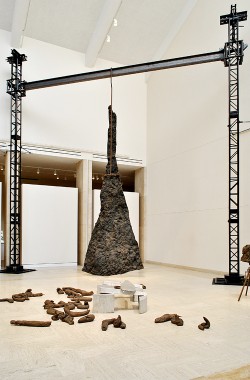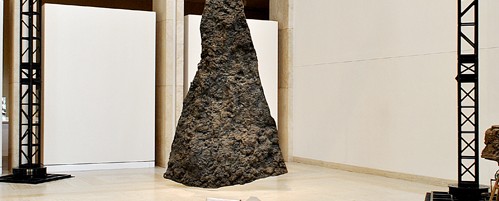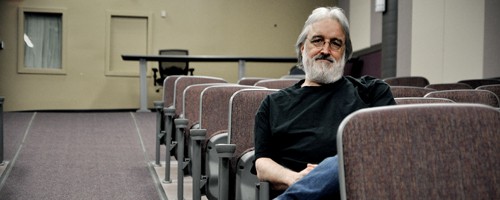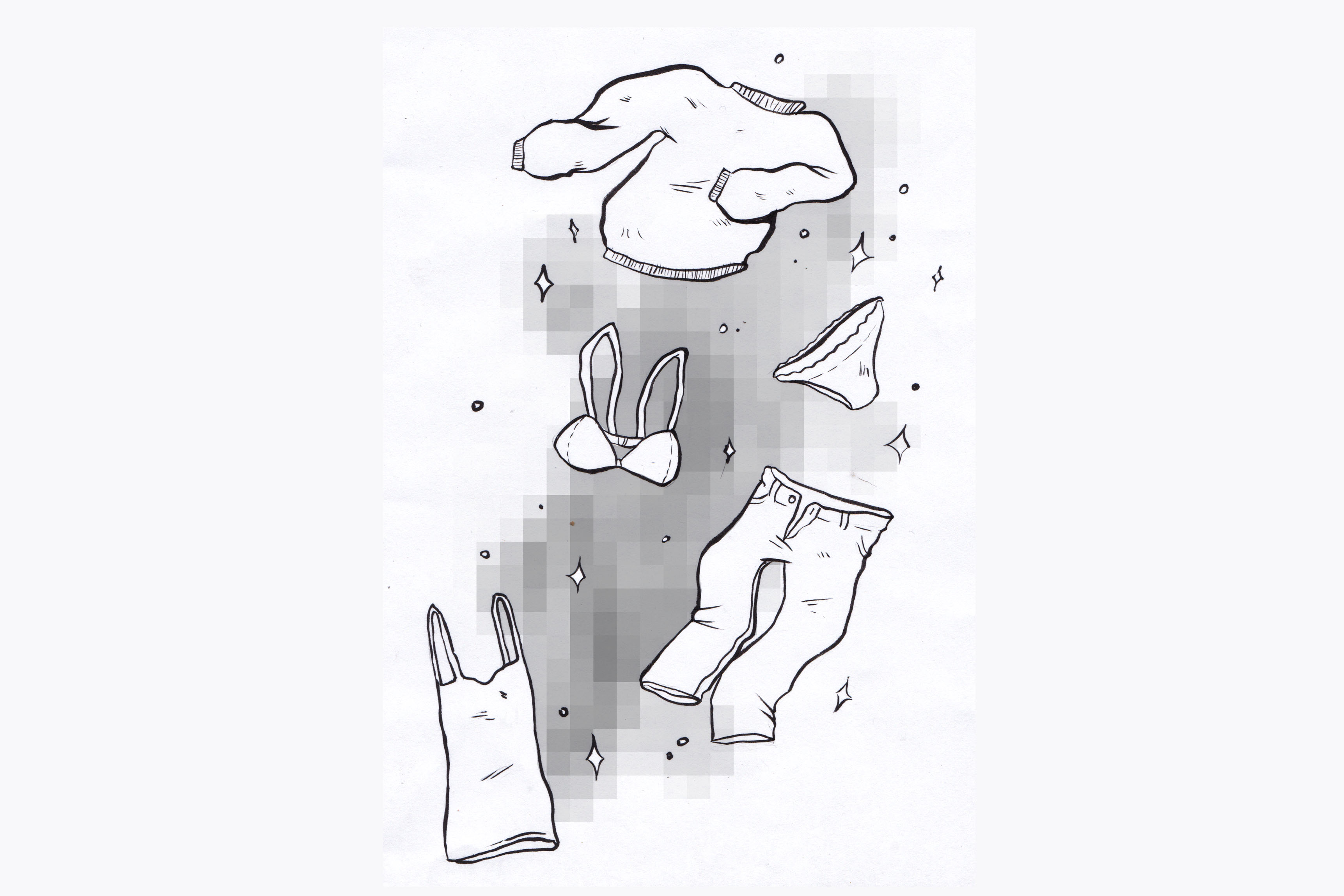The Portland Art Museum presents the work of mid-20th century artist Joseph Beuys, whose installation props express his appreciation of nature and Germany’s ancient past and traditions. It will be on view through Sunday, May 27, so it’s not too late to check it out.
Joseph Beuys made it cool to be German again
The Portland Art Museum presents the work of mid-20th century artist Joseph Beuys, whose installation props express his appreciation of nature and Germany’s ancient past and traditions. It will be on view through Sunday, May 27, so it’s not too late to check it out.

“Joseph Beuys is the central figure in postwar German art,” said Bruce Guenther, chief curator of the exhibit and curator of modern and contemporary art at the museum. “He is the artist who sets the standard and the ideas that artists would deal with for the next 40 years.”
Beuys studied philosophy and sought to reinvent German art and culture following World War II. He was drafted into the Luftwaffe, the German Air Force, during Nazi rule at age 21.
During the war, his plane was shot down, and Beuys later claimed that nomadic Tartars nursed him to health. They wrapped him in animal fat and carried him on a sled before German soldiers found him. This pivotal moment defined the rest of Beuys’s life and transformed him from a soldier into an artist.
“There’s every reason to believe that this is totally made up on Beuys’ part,” Guenther said. “He brings this persona: ‘I am risen from the flames and destruction of the war, and I am becoming an artist who is concerned with social issues, the environment.’”
Beuys would create works and tear them apart within three months. He decided in 1986 to cast his works in bronze to preserve them.
“He starts his activity as a sculptor,” Guenther said. “Then the sculpture moves quickly from an object to a room, and then from 7,000 oak projects to a whole country.”
Beuys planted oak trees all over Germany to restore the nation’s forests with a basalt column near each tree: “Oak tree—the obdurant, a strong tree, a mythic tree and very long-lived,” Guenther said.
The gods of old Germanic-Norse mythology dwelt in the black forest, and so by planting trees across the country, Beuys hoped to restore the place of the gods.
“To invoke the Norse gods is to jump over the Nazis and regain primitive connectivity to the Germans who emerged from the forest to fight the Roman legionnaires, and then leap from there into the present to become a social activist artist,” Guenther said.
The exhibition contains an object half the size of the room suspended from a steel beam. You also see several logs on the ground, a cart with a hammer bolted to it and an ironing board suspended by two logs. A photograph of Beuys himself walking through the fields hangs on the wall.
When you look closely at the logs, you see tools hanging out of them. Guenther said Beuys created them out of clay and called them primordial creatures rising from the muck.
“Each of them, at their core, has a tool around which they will become a being,” Guenther said.
Beuys cracked his skull in his plane crash and had a metal plate put in place to protect it. This, along with other severe injuries, gave him a deep appreciation for human mortality.
The anthrosophist philosophy of Rudolph Steiner also influenced Bueys’ work.
“Bueys is always aware of mortality, that life is a brief cycle,” Guenther said. “So when Steiner talks about creativity as the vehicle for change, for Beuys it is the window for coming to terms with the life he has led.”
The ironing board suspended by two logs is a stag protecting the creatures around it. In German mythology, the stag ruled the forest, protected lesser creatures and conveyed the souls of the dead to eternity.
Beuys cut the stag out of a cross section of logs divided into four chunks, creating the legs then placing a wooden ironing board on top as the body. The legs symbolize the natural world while the body symbolizes the artificial world.
“Manipulated wood, natural wood, the forest and the spirit are at work, so you see how he builds meaning into the materials and the idea,” Guenther said.
The object suspended from a steel beam is a lightning bolt, which Beuys made as a bronze cast of a mountain of dirt and clay he used in a previous work, and it hangs just as the sound of thunder hangs in the distance.
Originally, Beuys suspended the lightning bolt by placing a metal beam across two branches and hanging it from a rod precisely one inch off the ground. The tech crew at the museum created a steel beam balanced on two pieces of scaffolding, self-climbing tresses.
Chief preparator Matthew Juniper went to a warehouse to carefully measure out how tall the tresses and the steel beam needed to be.
“[The lightning bolt] came in a crate on a flatbed, then we uncrated it outside our building, and inside the crate was a steel cage that the piece was suspended within,” Juniper said. “So we had a crane to lift from there up onto our landing outside the building and turn it up on edge, and it was just small enough to fit through our doors.”
Juniper and the crew used chain hoists to lift the lightning bolt out of the cage, then hang it onto the rod. It took a lot of effort and coordination, but they finally managed to bring the lightning bolt into the building without taking off the roof.
The hammer bolted to the cart represents Thor, the Norse god of thunder and lightning, who traveled on a goat cart and created the lightning bolt by striking his hammer.
“Lightning is the source of energy in the Earth for Beuys,” Guenther said. “The stag is pointing toward it, and all the little creatures are hovering around the stag for protection.
“Beuys is someone you experience viscerally,” Guenther added. “You react to the materials and the form, but in order to truly appreciate his work, you must understand that it has a deeper reference to history, to life and to myth, to spiritual searching.”
Adjacent to the stag is a block of clay and mud on a tripod. It is called the “Boethian Felix” after Felix Booth, a British explorer who discovered the magnetic north pole in the 19th century. Beuys associated the magnetic north pole with the place where the gods of Norse mythology reside.
“The gods go to Thule, and that’s where magnetic north is,” Guenther said. “Beuys wanted to elevate this chunk of Earth with a magnet on top to evoke true north, that place where the gods go.”
Beuys, as a Catholic and a young art student, traveled to St. Ignacius Church in Spain. He returned with a plant, which he placed inside the “Boethian Felix.”
“It’s a connection to the idea that one can pursue spirituality and creative reality through rules,” Guenther said.
In one corner of the exhibit are two balls on the ground connected by wires to a device on a table. Wilhelm Reich, a German psychologist, believed that electric currents of the body shaped the consciousness of the person.
“Reich’s idea was that you sit in a box, and the energy of the atmosphere collects inside the box, and you become clear, mentally and emotionally,” Guenther said. “So you have this box with wires that goes down into clay balls sitting on the ground pulling the energy of the Earth as a living thing and storing it in the box.”
Beuys in considered an influential artist because of the complexity of his background and education.
“If you’re interested in green politics, he’s planting oak trees to reforest a decimated landscape. If you’re interested in identity politics, he’s trying to make being German okay again after the Holocaust and the Nazi period,” Guenther said. “He becomes the center of the compass, and everything radiates around him. He’s central to German and European art of the postwar period.”
Joseph Beuys
On view through Sunday, May 27
$15 adults; $12 seniors 55+ and college students;
free for members and children 17 and under







